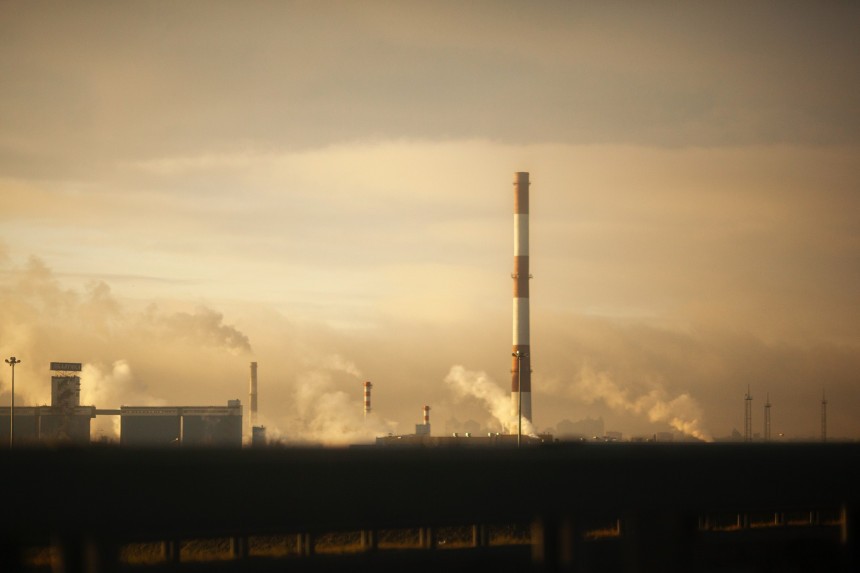If you were concerned about air quality and pollution, you probably have considered buying a more efficient automobile or even an electric vehicle. But have you considered stopping using gas stoves? Well, if you have not, researchers from California have discovered things that might change your mind.
A study published earlier this week in the journal of Environmental Science&Technology revealed that gas stoves leak methane when not in use.
Researchers estimate that U.S. gas stoves are putting millions of tons of methane (2.4 million metric tons in carbon dioxide equivalent units) into the air each year.
The value is equivalent to the annual amount of greenhouse gases from 500,000 cars, or what a country like the U.S. generates every three and a half hours.
Before you run to your stove to check for leaks, researchers have already noted that the amounts of methane that the tested units leaked are not dangerous to human health and do not pose a risk of explosion.
If you do suspect that your stove has a leak, please turn off the gas, open the window in the room where you keep the stove, and call a specialist to inspect it.
The leaks in question happen both through incomplete combustion and through post-meter leaks. Between 0.8 and 1.3 percent of all gas used by stoves is emitted as unburned methane.
Researchers used a 20-year timeframe for methane to estimate the impact that gas stoves in over 40 million American residences in the U.S. had when compared to cars.
Researchers examined a total of 53 home kitchens in California before emitting this result, and many of those were in bed and breakfast units that they rented.
Each kitchen that was tested was sealed with plastic tarps, and the goal of the study was to measure the emissions of the stoves when they were operating. However, they discovered that three-quarters of the methane released by the stoves was emitted while the appliances were not operational.
The other issue with gas stoves is that they emit an estimated 6.2 million metric tons of carbon dioxide when they are in use as gas burns. The methane used by most stoves is a greenhouse gas, and it is "dozens of times more potent than carbon dioxide," scientists note. However, it does not stay in the atmosphere nearly as long as carbon dioxide, and it is not plentiful in the air as CO2 is.
The worst part about gas stoves is that they also generate nitrogen oxide emissions, or NOx, which are health-damaging air pollutants. That is why you should always have good ventilation in your kitchen if you use a gas stove, especially when you use it.
One of the researchers has admitted to not using their hood before the study all the time but has decided to switch it on whenever the stove is used.
Researchers have also found that smaller kitchens reach the national standard of Nitrogen Oxide emissions within minutes of stove usage, and the limits that they were referring to are those for outdoor measurements, as there are no standards for indoor nitrogen oxide emissions because of stoves.
It is important to note that there are leaks of natural gas, out of which over 90 percent is methane, across the three million miles of pipeline in the U.S. supply chain.
Those leaks were not accounted for in this study, though. A different study made in California revealed that gas leaks totaled 0.5 percent of residential natural gas consumption in the state.
If this has made you want to ditch your gas stove, you can get one that runs on electricity, but it would be ideal for the main source of power for the electricity used to not be fossil fuels, but renewable energy. Easier said than done, but not entirely impossible.
With that in mind, switching to an electric vehicle is not the only step in reducing your carbon footprint but rather a route that some have taken while ignoring other pollution factors. If you cannot afford a vehicle that emits less CO2 and other harmful gases, you can still do your part to reduce your role in global warming.
You may do start to recycle if you do not already. You may also choose renewable energy sources instead of coal or other fossil fuels. Another step is to refrain from buying single-use plastic items if they are still sold in your area.
Researchers estimate that U.S. gas stoves are putting millions of tons of methane (2.4 million metric tons in carbon dioxide equivalent units) into the air each year.
The value is equivalent to the annual amount of greenhouse gases from 500,000 cars, or what a country like the U.S. generates every three and a half hours.
Before you run to your stove to check for leaks, researchers have already noted that the amounts of methane that the tested units leaked are not dangerous to human health and do not pose a risk of explosion.
If you do suspect that your stove has a leak, please turn off the gas, open the window in the room where you keep the stove, and call a specialist to inspect it.
The leaks in question happen both through incomplete combustion and through post-meter leaks. Between 0.8 and 1.3 percent of all gas used by stoves is emitted as unburned methane.
Researchers used a 20-year timeframe for methane to estimate the impact that gas stoves in over 40 million American residences in the U.S. had when compared to cars.
Each kitchen that was tested was sealed with plastic tarps, and the goal of the study was to measure the emissions of the stoves when they were operating. However, they discovered that three-quarters of the methane released by the stoves was emitted while the appliances were not operational.
The other issue with gas stoves is that they emit an estimated 6.2 million metric tons of carbon dioxide when they are in use as gas burns. The methane used by most stoves is a greenhouse gas, and it is "dozens of times more potent than carbon dioxide," scientists note. However, it does not stay in the atmosphere nearly as long as carbon dioxide, and it is not plentiful in the air as CO2 is.
The worst part about gas stoves is that they also generate nitrogen oxide emissions, or NOx, which are health-damaging air pollutants. That is why you should always have good ventilation in your kitchen if you use a gas stove, especially when you use it.
One of the researchers has admitted to not using their hood before the study all the time but has decided to switch it on whenever the stove is used.
Researchers have also found that smaller kitchens reach the national standard of Nitrogen Oxide emissions within minutes of stove usage, and the limits that they were referring to are those for outdoor measurements, as there are no standards for indoor nitrogen oxide emissions because of stoves.
It is important to note that there are leaks of natural gas, out of which over 90 percent is methane, across the three million miles of pipeline in the U.S. supply chain.
Those leaks were not accounted for in this study, though. A different study made in California revealed that gas leaks totaled 0.5 percent of residential natural gas consumption in the state.
If this has made you want to ditch your gas stove, you can get one that runs on electricity, but it would be ideal for the main source of power for the electricity used to not be fossil fuels, but renewable energy. Easier said than done, but not entirely impossible.
With that in mind, switching to an electric vehicle is not the only step in reducing your carbon footprint but rather a route that some have taken while ignoring other pollution factors. If you cannot afford a vehicle that emits less CO2 and other harmful gases, you can still do your part to reduce your role in global warming.
You may do start to recycle if you do not already. You may also choose renewable energy sources instead of coal or other fossil fuels. Another step is to refrain from buying single-use plastic items if they are still sold in your area.








